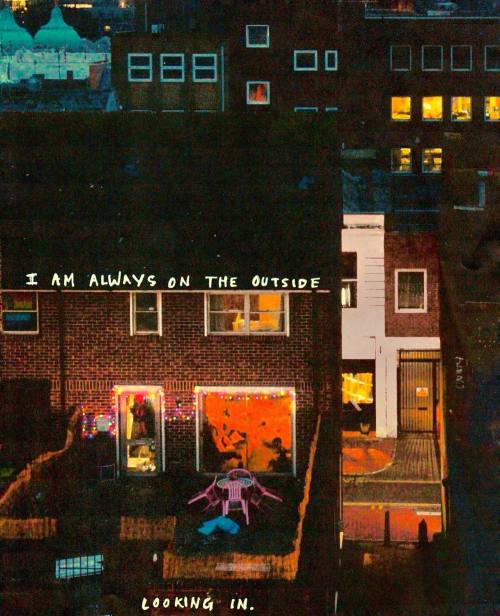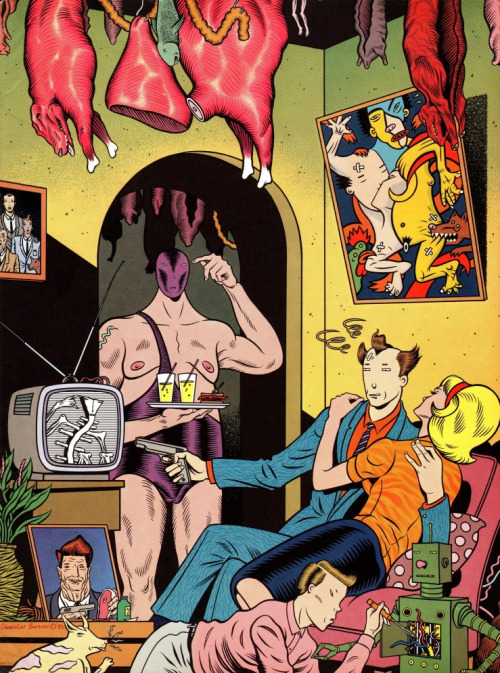Jesus, it’s COLD, isn’t it? Did I used to put up with this every January? Fcuk knows how. Basically I haven’t felt temperatures like this for two years and I DO NOT LIKE IT.
I am running a bit late today – possibly due to the icy cold making it increasingly hard for me to move my fingers to type – and as such will keep the intro to a minimum (you could at least pretend to be sad ffs), but not before saying thanks to all of you who wrote nice things about the cat last week, it was very much appreciated.
I am still Matt, this is still Web Curios, and I hope you feel levelled up.

THE SECTION WHICH HONESTLY FEELS A BIT SORRY FOR KATY, DESPITE THE SIGNET RING, PT.1:
- An Actual Advert Using That Cool AI Video Tech From Curios A Few Months Back: Yes, ok, fine, it’s not the most compelling opening link description I’ve ever penned – BUT! This is interesting! Honest! You will doubtless recall a link from before Christmas which demonstrated a quietly-amazing new AI-enabled technique for filming scenes which basically (ok, VERY basically) involves scanning a scene using a camera and then being able to manipulate said scene within virtual 3d space, effectively creating a navigable digital diorama that you film within…look, here’s the original link, click it and see if it makes more sense than this increasingly-garbled explanation, and if you’re interested you can read some Tweets from the ad’s director about How It Works here. Anyway, this tech has now been used in an ACTUAL TV AD for McDonald’s – the ad itself isn’t super-exciting, but I am struck by the pace of this – two months from ‘speculative tech floating around Twitter’ to ‘featured in an actual campaign for one of the world’s biggest brands’. The reason I’m including this is just to point out that all of the things you see in Curios are real and potentially practically useful – so, effectively, to make myself feel marginally more purposeful than I ordinarily do at 7:03am on a Friday morning. Is it working? Not sure, I’ll let you know.
- A Short AI Batman Film: I do not care about Batman, and, if I’m entirely honest, I don’t think human society ever needs to hear another story about a tortured billionaire and his fetishes. Still, this little video is all sorts of impressive – it’s (basically) all AI-generated, having been cobbled together with a bunch of disparate free tools. The link takes you to a Twitter thread featuring the video and its creator’s explanation of the steps they took to make it – again, this is included less because it’s a revolutionary take on the pointy-eared rubber enthusiast and more because it’s a neat object-lesson in how all the fun new toys that have cropped up over the past year or so can be linked to make things that are very much greater than the sum of their parts. Oh, and seeing as we’re doing ‘how to use this stuff to make videos’, here’s another short Twitter thread about how you can use a similar toolstack to make animated talking head videos – honestly, this is practically magic.
- AllSearch: There’s been a lot of talk about whether ChatGPT will replace Google, to which the only reasonable response is ‘Jesus, I hope not, have you tried using the fcuking thing?’ – still, it’s clear that with the integration of the software into Bing we are moving into some sort of NEW ERA of search (one which, oddly, will feel strangely familiar to anyone who grew up with Ask Jeeves and remembers the disappointment when you realised that the software couldn’t actually understand human language at all, and the strange frisson of asking the digital butler if, not to put too fine a point on it, he fcuked), one where we’ll expect to be able to converse and ask questions of a semi-coherent digital interlocutor and refine our search by asking questions rather than simply attempting another combination of keywords. AllSearch is an interesting example of how stuff might end up working – it’s been trained on a large corpus of books (it doesn’t say where from, or which ones, unhelpfully), and lets users ask questions of its knowledgebase – results are returned both in an AI-generated summary and with a series of links to references that the software has used to come up with its answer, meaning you can (to an extent) check the machine’s reasoning before blithely accepting its confident assertions. I tried this with a few philosophical principles and it was…pretty good! Except, obviously, without knowing what the sources are, where they were compiled from and who by, it still doesn’t solve the problem of ‘is this info legit? Is it objective? IS THERE AN AGENDA???’ which, as we’re going to learn quite quickly, are going to become questions we’re even less well-equipped to answer than we currently are.
- Magic Thumbnails: In the great ‘AI is coming for our jobs!’ panic, I confess that I hadn’t for a second spared a thought for the army of kids that Mr Beast employs to work on his YouTube thumbnails – turns out, though, that they are as fcuked by the coming future as the rest of us are! Sorry, army of thumbnail kids! Magic Thumbnails lets you define what you want the thumbnail to be of, add an image of your INCREDIBLY EXCITED FACE, add some copy and BOOM!, all your dreams come true (presuming, of course, your dreams have relatively modest parameters).
- InstaNovel: I imagine that at least one of you reading this has made 2023 The Year In Which I Finally Start/Finish That Fcuking Novel – good luck! I believe in you! Just in case there’s any part of you which worries that the machines are soon going to render good, old-fashioned human storytelling otiose, you may find this website comforting. InstaNovel promises to create a BESPOKE, ILLUSTRATED STORY for you based on just a few short prompts – you enter the rough plot beats you want the story to follow, give the site an email address, and WAIT. 24hish-hours later you’ll receive a link to your VERY OWN tale, penned by GPT-3 and illustrated by Dall-E and lovingly paginated JUST FOR YOU! And, well, it will be rubbish. Really, really bad – the sort of thing you might half-remember writing when you were about 9, when you started with grandiose ambitions of writing something like The Hobbit or The Dark is Rising until you realised halfway through your third paragraph that writing a book is LONG and HARD and probably too much effort tbh. I am not ragging on the machines here – they are young! They will get better! We are still, in the long run, going to be rendered redundant! – but it’s nice to occasionally be reminded that the vast majority of copy and visuals produced by AI are still, frankly, crap. Let’s see if I’m still saying that in 2024, though.
- QuizGrowth: “Turn your content into exciting quizzes thanks to the POWER OF AI!” is the basic elevator pitch here – and yes, I know that this isn’t exactly exciting, and the look and feel of this is…functional at best, but THAT’S NOT THE POINT. The point (ahem) is ‘stuff you can do with GPT which you may not even have thought of, even if it is, admittedly, a bit boring’. If nothing else, any of you working in HR can basically outsource all your onboarding materials development to this and fcuk off to the pub.
- Historical Figures Chat: This started floating around last week but I couldn’t find the download link – now, though, I am pleased to offer you the opportunity to download the personalities of 20,000-odd historical figures to your phone so that you can converse with them to your heart’s content! Obviously that’s not what is ACTUALLY going on here (unless, of course, the developer really does have access to the departed souls of a host of history’s notables, in which case there’s probably a bigger story here) – instead, this is (as far as I can guess) a series of pre-written prompts to get an LLM to ‘converse in the style of’ Jesus, Hitler, Mata Hari or Vivienne Westwood, with a nice, user-friendly front-end. This is both fun – who wouldn’t want to set up a groupchat involving Gandhi, Marilyn Monroe and Sappho? NO FCUKER, etc etc – and a little bit troubling, not least because this is quite obviously going to be used by kids for homework purposes and it, basically, lies a LOT. Ask any of the (many, many) Nazis available to chat with about their beliefs and you’ll find they are, perhaps surprisingly, a lot more moderate than history might suggest; a bunch of fairly notorious anti-semites and racists are miraculously cured of their hateful beliefs, and express a surprising degree of regret about the ways in which future generations have interpreted their words and their legacy…even Jimmy Savile (an…odd choice to include) issues a spirited denial of the crimes he’s accused of. Without wishing to be apocalyptically hyperbolic (HEAVEN FORFEND!), it’s interesting to wonder about the degree to which we might be about to do significant and lasting damage to our species-wide knowledgebase in the coming few years, as we once again fcuk around with technology and information without really thinking too hard about the consequences. You can read more about this here, should you so desire – it really is quite the thing.
- This Model Does Not Exist: This is a nice little project; This Model Does Not Exist is an experiment by Danny Postma, who has created ‘Alice’, a nonexistent human who exists in a particular bit of latent space and who Danny is creating new images of each day. Visitors to the website can vote for their favourite images, with the most popular being posted daily – you can see and follow Alice on Insta here. I’m curious as to what the endpoint of this is – whether Postma simply wants to see how many followers he can get, or whether there’s going to be some sort of narrative or deeper interaction to the project – but in the meantime it’s interesting to watch the occasional thirsty drivebys from men who haven’t clocked the intent behind the project. “Cute pic! But what happened to your leg?” reads one comment on a photo which includes a classically-AI-mangled limb, proving conclusively that even legs that look like giant, terrifying andouillettes aren’t enough to put off a horny man scrolling the ‘gram.
- Lenny’s Podcast Search: This is a demo by a company called Broadn, which has used its generative learning tech to create a search layer over the podcast archive of one Lenny Rachitsky, who apparently does a pod about product management. I couldn’t personally care less about product management (sorry Lenny!), but the idea (once again) of using a bunch of tools to create a semantic search layer over a corpus of content like this to make it more usable is smart; it feels like ‘natural language search for any website’ is a service layer which someone is probably working on RIGHT NOW (or which YOU should start working on right now! Go on! I HAVE FAITH IN YOU!). In fact, here’s someone who’s built something similar on top of their newsletter archive, and now all I want is for someone to cobble this together for Curios – PLEASE???
- Bardeen: ‘AI tools as productivity aids’ is by far and away the least ‘sexy’ application of any of this stuff that it’s possible to think of – still, it’s also far more practically useful than the infinite number of ‘generate bad fantasy artwork at the press of a button!’ websites that have emerged in the past six months. Bardeen is a Chrome plugin which basically lets you set up a bunch of automated actions to save you time – so, for example, you can link it to all your Google Suite accounts to, say, create new meetings in your calendar when it detects specific terms in your emails, or to summarize any webpage in a single click and dump the resulting notes into a specific document, or even generate a speculative ‘can we hire you?’ email to someone in one click from their LinkedIn page. Which, yes, fine, is all DULL, but it all also seems to sort-of work; I have been playing with it a bit this week and it’s slightly-terrifying. It’s also pretty much entirely useless for the sort of work I do – and, again, this is less about the specific examples here and more about the general sense of possibility that this stuff gives me.
- Can’t Do Hands: A Twitter account sharing images of all the ways in which AI image generators manage to mangle human fingers. It feels like there should be a specific phobic word for the fear and body horror engendered by the meaty wrongness of Dall-E and the rest; actually, there’s a half-decent PR idea in coining terms for feelings and thoughts that only make sense in a post-AI world, should anyone fancy exploring that for longer than the two seconds I have just spent doing so.
- The Time Project: TIME! So significant! So important! So…so…so TEMPORAL! How do you think you might celebrate the nature of time were you the creative or digital director for renowned jewellers and watchmakers Cartier? Do you think you might, I don’t know, create something beautiful and spectacular and, er, timeless, a gorgeous monument to the duality of ephemerality and permanence that characterises human existence? Or do you think you would instead spaff the budget on commissioning a series of short films about time featuring Jake Gyllenhall? If you answered ‘GIVE ME JAKE OR GIVE ME DEATH’ then CONGRATULATIONS! This is AMAZING, and I would like to congratulate Mr Gyllenhall (and the guy credited with directing the shorts) for trousering what I presume was no little wedge in exchange for – and I can’t stress this enough – what appears to be no more than approximately 60 seconds or so of acting time. When they say ‘short films’, you see, they aren’t lying – each is approximately 5s long, and they are in slomo, and they feature such incredible scenes as ‘Jake Gyllenhall reading a book and looking handsome’ and ‘Jake Gyllenhall laughing and looking handsome’ and ‘Jake Gyllenhall moving chess pieces and looking handsome AND smart’. Do you remember when BMW commissioned that internet-only short film with Clive Owen to advertise its cars in the mid-00s and everyone shat themselves at the creative audacity and boldness? Yeah, well this is where it’s led to, so I hope you’re happy Clive Owen.
- Copy Dennis: This is fcuking GREAT – well done, Dennis! Dennis is a webdesigner/developer, who, in common with many others of his ilk, has a personal website to advertise his work; Dennis noticed that there were a lot of other people around the world who seemed to have taken…inspiration, let’s say, from his site’s design, often to the point of ripping it off wholesale. So Dennis launched this new site in response, which neatly highlights all the other people who have coincidentally-similar online presences and which gives each of them a percentage score based on the degree to which they have just lifted the theme. Amusingly this site also tracks whether the sites in question are still online, or whether their creators have taken them down out of what I presume is crippling shame – this is SUPERB snark, and I would like to see more of this sort of thing in 2023 please.
- Galaxy of Flesh: Another ‘films that never existed, imagined by AI’ – this time, enjoy this selection of fantastic stills from David Cronengerg’s ‘Galaxy of Flesh’, an unpleasantly-meaty space-horror extravaganza with some BEAUTIFUL costume and FX design, and which I would very much like to see one day.

NEXT UP, ENJOY A SELECTION OF BRAND NEW GRIME TRACKS MIXED BY JI!
THE SECTION WHICH HONESTLY FEELS A BIT SORRY FOR KATY, DESPITE THE SIGNET RING, PT.2:
- Slums: Maths made beautiful. Slums is a gorgeous little bit of webart – a series of procedurally-generated alienfutureurban landscapes which you can watch grow and develop in your browser. Odd, shadowy spacecraft glide past and the slums and the buildings and the towers grow up as you watch, gradually obscuring the sky until you hit any key and begin an entirely new seed. There’s some gentle audio here too – this very much falls under the heading of ‘oddly-meditative digital experiences which I would totally sit and zone out to in a gallery given half the chance (especially if they have the heating on)’, and I think it would benefit from being thrown onto the biggest screen you have access to.
- Written In Stone: I was not aware that people ‘signed’ pavements, but it turns out that they do – Written In Stone is a site which collects images of pavements from the US which have been stamped with the seal of the companies that laid them. Which, yes, fine, isn’t exactly a description to get the blood racing; equally, though, I quite like the idea that these (presumably) small, family-owned businesses are in a minor way forever immortalised in a city’s fabric, and it made me wonder whether there are more ways in which cities could work to permanently commemorate the people who build and maintain them in (there are, lots).
- Tame: You’d think that after…how long is it since Tinder changed the way in which people date? A decade? Jesus, I just checked and it’s 11 years, MY GOD! Anyway, you’d think that after 11 years we’d have largely exhausted all the variants on the simple ‘use technology to find local people to put inside you’ premise, but here we are in 2023 and STILL we are seeing new variations on the theme (perhaps unsurprisingly, seeing as Tinder appears to have ushered in a world in which dating doesn’t really exist anymore, having been supplanted by the new, less-immediately-exciting-sounding hobby of ‘sitting alone in one’s room having a series of desultory conversations which all eventually peter out without ever actually seeing your interlocutor in the flesh’. 2023’s first new entrant into the market is Tame, whose BIG GIMMICK is that you can only have one conversation on the app at a time, meaning that rather than spreading your attention marmite-thin among 20-odd potential suitors you instead (so the thinking goes) go DEEP with one person and really get to know them; if you want to stop talking to them, you have to actively break the connection AND TELL THEM WHY, which, honestly, sounds fcuking BRUTAL but is, the app suggests, intended to stop people just ghosting each other and instead think more seriously about who they are talking to and why. Interestingly, once you’ve broken a chat you can NEVER match with that person ever again, which gives the whole thing an interestingly-high-stakes dynamic – WHAT IF THIS PERSON IS THE ONE??? Anyway, I don’t imagine for a second that this will take off in a big way, but it’s interesting to look at the ways in which people are attempting to de-Tinderify (yes, that is the accepted term) the process of finding someone to see out the apocalypse with.
- DateForce: A website that is simultaneously a joke and also…real? DateForce is the answer to the question that, as far as I know, noone had ever previously wanted the answer to – to whit, ‘what would it look like if someone developed CRM software but for your dating life?’. It would, it turns out, look like this – a system to log your dates, set followup actions and, the site promises, eventually to be able to analyse the data you collect for forecasting purposes! Whilst on the one hand this is utterly sociopathic behaviour (look, sorry, but it is), it’s also the sort of thing I can imagine finding useful if you’re one of those terrifyingly-Alpha American people who go on five dates a night and need to keep track of which suitor was which. Still, just to remind you, there was someone who went a bit viral a decade or so ago when they revealed that they kept an ongoing spreadsheet of their friendships, ranking them based on a series of qualities including attractiveness, wealth, usefulness and the like – that person was Milo Yiannopoulos, and you don’t really want to be like him, do you?
- Ruas Do Genero: The second website in the past year or so which analyses the naming of streets within a city; this project looks at the number of streets in Porto which are named after men compared to those named after women (you may not be wholly surprised to learn there is a disparity between the two), who these people were, and what the choice of streets tells you about relative gender roles in Portugal over the past couple of centuries. There’s some nice, light scrolly webwork on display, but more generally it’s just interesting to see how history and economics and politics (and gender politics) leave their mark on a city’s streets.
- Wobble Clock: I know that pretty much every week here I feature a link followed by a desperate plea for someone to ‘make this for London’ or ‘make this for me’ (you may be interested to learn, by the way, that the total number of times anyone has ever gotten in touch to say ‘yes, Matt, we heard your plea and we WILL make that thing that you requested!’ is zero. You fcuks), but this time I really mean it. PLEASE will someone make this for me? The Wobble Clock is a clock whose hands have a quite delicious degree of tensility, and watching it move is possibly one of the most satisfying experiences I’ve had all year (it’s early, but I’m already confident it’ll be hard to beat). Seriously, click the link and get mesmerised by the lovely, springy passing of time.
- Make Your Own Electric Bike: Have you started the year with GRAND PLANS? Perhaps you’re considering finally doing something with that patch of scrubland at the end of the garden? Maybe you’re finally going to learn to code (TOO LATE)? Or are you desperately seeking some sort of meaningful endeavour for 2023, something to help you fill in the increasingly-chilly hours between birth and death, something to confer a bit of STRUCTURE and give you a GOAL, a reason to get up in the morning (do you think, maybe, that I am projecting a touch here? I think possibly I am)? If so, then do I have the 2023 project for you – BUILD YOUR OWN ELECTRIC BIKE OUT OF PLYWOOD (and a few other components)!! This link is actually a couple of years old, but I’ve no reason to think that anything described here will be out of date – it’s a series of detailed instructions, compiled by the nice-seeming Evie Bee, which if followed will result in you eventually having a rather gorgeous, minimal-but-functional wooden velocipede powered by an electric motor. Honestly, if you have a shed and a seemingly-infinite number of grey weekends stretching ahead of you (and, fine, a degree of practical competence of which I can only dream. And maybe a bandsaw, and a jigsaw, and definitely a workbench) then this could be the kickstart your year needs (the initial link is pt1 of the guide, by the way; you can find pt2 here).
- Summer Afternoon: This is small, a bit pointless and utterly lovely – a bit of experimental coding by a certain Vicente, developed to practice their WebGL skills, which lets you wander around a small seaside village and explore what’s going on. Ok, fine, there’s not LOADS happening, but the aesthetic of the place here is just gorgeous, and the overall art style employed is lovely, and, whilst it is A N Other ‘virtual space within which to move an avatar’, it’s also SUCH a nice antidote to the spate of miserable, soulless corporate ‘metaverses’ of which we’ve seen far too many in the past 12 months. If you’re going to make me wander round a 3d environment for no good reason, can you at least make it a pleasingly-cute one like this? Thanks.
- Bloggy Garden: Oh this is cute! “This is a garden of RSS feeds from a variety of sources. It’s updated every couple of days. Each feed is represented by its own shrub. To see just one feed at a time, click one of the moving shrubs. Enjoy exploring!” Serendipitous random discovery with a pleasingly-whimsical facade, pretty much a perfect website (based on the largely-arbitrary criteria I have just invented).
- Magnetic Games: A YouTube channel dedicated to featuring magnets doing cool stuff – you may not think magnets are particularly interesting, but there was a programme on Radio4 yesterday afternoon that explored the science behind magnetism and which basically explained that they are effectively magic, so, actually, you are wrong (you can listen to the show here if you’re interested – it stuck in my mind not only because it was genuinely interesting, but also because it made repeated reference to the ICP song ‘Miracles’, for obvious reasons, and I can’t stress enough how pleasing it is to know that Insane Clown Posse are known to the serious folk over at Broadcasting House). Anyway, this is FULL of great videos of magnetic putty and ferrofluids and generally silly experiments, and if you have any sense of childlike wonder left within the shrivelled husk you call a self then you will enjoy this a lot I think.
- Inegy: This is interesting, if incomplete – Inegy offers you a tool to see how your investment in a particular stock would have performed had you acted based on a set of specific rules. So, for example, if you had bought stock in company X every time it’s popularity on Reddit fell, or if you sold it when it trended up on Google, how would your £100 have fared? This FASCINATES me, and I rather like the idea of a system that would let me play a theoretical competitive game of ‘imaginary plutocrat’ with an investment portfolio and a series of ‘if x, then y’ rules. The gaps here are in the stocks tracked – it’s a VERY partial selection, which makes this less compelling than it might otherwise be – but there’s the faint idea of something genuinely interesting in this which might be worth playing around with.
- The Dog Photography Awards: I am not really a dog person, sorry; I know, I know, man’s best friend, etc, but, well, they smell, and they need taking for walks, and, fundamentally, cats are better. Still, even I can appreciate the majesty of some of the hounds captured in this year’s selection of winners at the Dog Photography Awards (although personally speaking I am disappointed by the lack of Afghans). BONUS DOGS! This is a newsletter post compiling all of the top dogs of 2022, and whilst I wouldn’t ordinarily feature something quite so Hallmark, I equally appreciate that it’s January and it’s miserable and cold, and you could probably do with something to take the edge off.
- The Floppy Museum: All of the information you could EVER possibly want about the history of the floppy disc, hosted on a website which is running off a 286 PC booted from…a floppy disc! Recursive and silly, but also sort of amazing that you can run a functional website on 40 year old tech like that.
- Odeuropa: There are many reasons why Brexit was a fcuking stupid and miserable thing to do, but one of the things that genuinely saddens me more than almost anything else is the fact that in one idiotic swoop the UK removed itself from significant swathes of European scientific collaboration – which means that, as far as I can tell, we have no input into Odeuropa, “a European research project which bundles expertise in sensory mining and olfactory heritage…While museums are slowly discovering the power of multi-sensory presentations, we lack the scientific standards, tools, and data to effectively identify, consolidate, and promote the wide-ranging role scents and smelling have in our cultural heritage. For these reasons, olfactory heritage remains severely under-valued as a resource in both tangible and intangible cultural heritage contexts. Fortunately, some key prerequisites for addressing this problem are already in place. In recent years, European cultural heritage institutions have invested heavily in large-scale digitisation: we now hold a wealth of object, text and image data which can now be analysed using sophisticated computer science techniques. What remains missing is a broader awareness of the wealth of historical olfactory descriptions, experiences and memories contained within them. We recognize this as both a challenge and an opportunity. Odeuropa will apply state-of-the-art AI techniques to cultural heritage text and image datasets spanning four centuries of European history, to identify and trace how ‘smell’ was expressed in different languages, with what places it was associated, what kinds of events and practices it characterised, and to what emotions it was linked.” Ok, so the website isn’t exactly thrilling (it is, er, an academic research project, after all), but this is SO interesting; I had honestly never even considered scent and smell as historical concepts worthy of study, but on reflection it makes all sorts of sense – if I happened to work for any luxe/perfume-y brands, I would be trying (and, inevitably, failing) to get them involved with this.
- Nudl: Did you know that one of the most important things that a child can do to promote their healthy, positive development into adulthood is…keeping a diary? No, of course you didn’t, because that statement is patently stupid and wrong, and yet it’s exactly the line being punted by spectacularly-bougie stationery startup Nudl, which is trying to trick parents into buying a monthly diaries for their offspring (in case you’re interested, a whole year’s worth of diaries for a single child will set you back a cool £160ish, which feels…a lot). Why would you do this? WELL LET NUDL TELL YOU!: writing a diary (sorry, ‘journaling’, excuse me while I grind my teeth into nothingness in miserable frustration), provides kids with a “boost in mindfulness, memory and communication skills), scientific studies have also shown that reflection and journaling can lead to better sleep, more self-confidence, a stronger immune system and a higher IQ.” Hang on, what? A stronger immune system? Has…has this claim been fact-checked at all? Anyone interested in buying one of these for their family, please get in touch as I have some magic beans you may also be interested in.
- MegaSociety: There are many, many spectacularly-embarrassing memories from my childhood that I have, for the most part, managed to stuff into a dusty, back-of-mind oubliette and which generally don’t escape – this site, though, sadly reminded me of that time when I was five and I decided I wanted to apply to Mensa (you cannot imagine the horrible hot flushes of shame I am currently experiencing, trust me; I was almost certainly exactly as awful a small child as that small vignette makes me out to be). I didn’t go through with the application for some reason – possibly because I wasn’t the sort of five year old who actually wanted to sit an hour-long assessment featuring logic puzzles in their spare time) – but was reminded of Mensa when I stumbled across the official home of the MEGASOCIETY (my caps), the world’s ULTRA-HIGH IQ SOCIETY! “The Mega Society is a high IQ society open to people who have scored at the one-in-a-million level on a test of general intelligence credibly claimed to be able to discriminate at that level…The Society exists to facilitate interaction among its members and to assist them in gaining access to resources to accomplish their individual purposes” (that last line – a touch sinister, no?). If you’re interested in becoming a member (I won’t ask what ‘individual purposes’ you are pursuing) then you will have to take this test and then send your results to the Mega Society for marking – please do click the test link and have a look at the questions because they are HORRIBLE and made me feel like I have an IQ in double figures, and I would like you to feel the same way (also, if you click the link and realise that you can do all of the questions without breaking a sweat, please don’t tell me).
- Write Max A Letter: A website that lets you write a letter to one Max Bittker. I don’t know who Max is, or why they might want to hear from you, but in case you fancy sending a small digital postcard to someone who otherwise has no idea you exist then, well, ENJOY!
- 10 Typos: This is good fun – each day you’re tasked with identifying the 10 typos in the presented text as quickly as possible, which is both mildly-diverting and also excellent training should you want to start a short-lived career as a proofreader.
- Hamster Invaders: Another silly little project by Matt Round – Space Invaders! With cartoon hamsters! And featuring the Hamster Dance song by the Cuban Brothers from back in the day! This is fun, even if that song makes me slightly queasy due to some associated memories from Those Times.
- Grow Golf: This week’s final miscellaneous link is this rather fun golf game – see how many balls you can sink whilst at the same time cultivating a small garden. Look, I appreciate that that description will make no sense whatsoever, but I promise that the game is both intuitive and significantly more fun than that cack-penned writeup might suggest.

LAST UP IN THE MIXES THIS WEEK, ENJOY THIS SELECTION OF “JAPANESE AND ASIA SELECTION FUSION, AMBIENT, SYNTH POP, JAZZ AND OBSCURE DISCO” MIXED BY THE FANTASTICALLY-NAMED BASTER JAZZSTER!
THE CIRCUS OF TUMBLRS IS SADLY EMPTY!
THE TROUGH OF (INSTA) FEEDS!
- Nude Robot: Impressive CG animation with a decently body-horror-ish theme (although that might just be my impression – regardless, there’s something unpleasantly…rubber/meat-y about a lot of this, which in case you’re wondering is very much intended as a compliment).
- The Visual Dome: One of the interesting things about AI image generation is that odd sensation of finding a particular ‘place’ in latent space; a semi-coherent aesthetic that feels new and familiar at the same time, and which is defined enough to explore within. Which is exactly what The Visual Dome is – an Insta account (and, obvs, associated NFT sale – but let’s ignore that side of it) which posts images of a vaguely Wes Anderson-y 50s-ish retrofuture, which all inhabit the same sort of broad vibe…It feels like there is an interesting project somewhere in defining an AI aesthetic for a particular brand, but in general I am just sort of fascinated by projects like these that explore the margins of a visual style.
LONG THINGS WHICH ARE LONG!
- Umami: We start this week with something which, look, may well be total w4nk, but which I found interesting and thought-provoking and a potentially-useful way of framing much of contemporary consumer-facing culture over the past few years. The central concept here, as presented by the people behind creative agency Nemesis, is that there has been a common quality to popular experience and presentation over the past few years, here described as ‘umami’ but which might usefully be characterised as: “strong flavors, namely umami, mark a surge of intensity in the flow of experience. It also becomes clear that paradox itself is at the heart of contemporary consumption. For example: “This shouldn’t be good but it is”; “This doesn’t seem like what it’s supposed to be”; “This is both too much and not enough”; “I shouldn’t be here but i am”; “This could be anywhere but it’s here”” Honestly, I read this and suddenly realised that it was the best evocation of what ‘popular’ or ‘zeitgeist-y’ cultural products or experiences or trends have had in common for the past few years – whether or not you buy the ‘umami’ wrapper is up to you, but the central thesis here seems to me broadly sound, and it marks an interesting way to think about pop culture in the post-remix age (and a way of thinking about your own projects, potentially). Or, as I said, it might all just be total w4nk.
- The Creative Underclass is Still Raging: Or ‘why the lie that is ‘The Creator Economy’ is bad for us and makes people miserable’ – Freddie de Boer writes here about the ways in which a significant swathe of the white-collar middle class feels bad about itself and angry at those it perceives to be leading the sort of ‘creative’ life that said white-collar middle class increasingly feels that it too should be entitled to, and if you don’t see a significant amount of yourself in this then, well, you’re a better person than I am, frankly: “we’ve created a culture where it’s widely understood that you can’t simply make enough money to live; you also have to be serving some higher calling or deeper need. I’ve written for years about the fact that we’ve built a society in which there are more ways to be a loser than a winner. Most people, certainly most college-educated upwardly mobile people who enjoyed active and pushy parents, feel the need to do more with their lives than to fill out TPS reports. This is as human and sympathetic desire as I can imagine. And at the same time I understand that there’s plainly a certain carrying capacity for employment in creative fields; we can’t sustain an all-podcasting economy, despite the efforts of an army of people. All of which is to say that life isn’t fair and the world is imperfect.”
- How You Might Use GPT To Fcuk With People: Amongst all the froth and cant and rhetoric around AI and its uses and impact, I’ve been surprised at how few people seem to be speculating about all the amazing, fun ways in which you could possibly use the tech to make people’s lives incredibly awkward. It doesn’t, for example, strike me as inconceivable that one might be able to spin up a system that uses GPT to write an infinite number of complaint letters to a business on a particular issue, each worded slightly differently to mask their pro-forma nature, or to fake a letter-writing campaign to a specific MP or set of MPs from their constituents…At the very least, this could be a superb way of gumming up the wheels of a business, and at worst…well, let your imagination run riot! The actual title of this paper is “Forecasting potential misuses of language models for disinformation campaigns—and how to reduce risk” – the link takes you to a blogpost summary, but you can download the whole paper if you’re interested; it’s interesting both from a security and anti-misinformation point of view, but also as a source of ideas for ways in which you could abuse the tech in all sorts of nefarious ways. If you work in crisis management and your job is to scare clients into paying you a lot of money, this will be very useful indeed.
- How Singapore Is Attempting To Govern AI: This is a bit dry, fine, but it’s an interesting look at how one country is attempting to put in place checks and balances to ensure that the use of artificial intelligence is at least to some extent governed by some consistent safeguarding principles. There’s a lot of interesting stuff here, not least the idea of AI Verify which is a voluntary platform which “validates companies’ claims about their AI systems vis-à-vis a set of internationally accepted AI governance principles that countries coalesce around and on which Singapore’s AI governance initiatives also stand”, and it will be interesting to see which countries’ initiatives gain international traction in this space.
- Journaling With GPT-3: If you saw the link earlier on for kids’ diary company Nudl and unaccountably weren’t tempted to shell out £13 on a notebook for your little darlings (WHY NOT IT WILL IMPROVE THEIR IMMUNE SYSTEM YOU ARE A FCUKING TERRIBLE PARENT), perhaps you’ll instead be tempted by this piece, which explains why it’s apparently AMAZING to use ChatGPT as a means of keeping a diary. To my mind this sounds an awful lot like that link from a few months back, in which someone wrote about using ChatGPT to talk with their childhood self – and, frankly, about as messed-up, but, well, you do you! Although, really, I can’t see how this sentence – “It can help you create a new narrative or storyline for life events so that you can make meaning out of them” – is anything other than massively psychologically unhealthy and probably not actually a good idea at all.
- Return of the Secretary: I don’t know if I believe this, but it feels relevant to the earlier link about how LLMs could be used to fcuk with companies and MPs and the like – the article basically suggests that there will be a renewed role for human gatekeepers, as senior decisionmakers are increasingly bombarded with AI-generated communications and increasingly require someone to triage the incoming barrage of machine rubbish and determine what needs looking at and what can instead be binned. Personally-speaking, I think the author is massively underestimating the extent to which we’re going to see a parallel ecosystem of AI-led solutions to AI-created problems, but maybe he’s right and I can find a tertiary career as a plutocrat’s email goblin. THE FUTURE’S BRIGHT!
- The Twitter Story So Far: I have sadly been forced to keep a close eye on Musk and Twitter and the whole miserable clownshow, but if you’ve been fortunate enough to be able to ignore much of the detail then you will quite possibly enjoy this excellent overview of the past few months at the company under Elon’s visionary leadership. Most of this isn’t new per se, but there are some wonderful details contained within the piece – the rudeness! The arrogance! The tears! – and it does nothing to alter the increasingly-universal conception that, rather than being a generational genius visionary, Musk is in fact just a bit of a d1ck.
- 2023 In Emoji: The first post of the year from Jennifer Daniel at the Unicode Consortium, which looks at the priorities for the organisation in the coming 12 months; despite the fact that, in the main, I fcuking hate emoji and have been hugely sniffy about them (like the horrible language snob I am) for the past decade, I find Daniels’ posts about the thinking behind them absolutely fascinating. Emoji is a language which has now been around long enough to reach a degree of maturity, and the questions that Unicode ask about how best to optimise the ‘alphabet’ (if you will) and to improve the taxonomy of emoji, and how to ensure that the language stays reactive and fluid and relevant and useful, are super-interesting, particularly if you have any interest in language and communication. Aside from anything else, this is a really interesting piece of writing about ‘ways of thinking about language and meaning’, which in itself is a massive and knotty and super-chewy topic.
- A Wired Compendium: This is SO INTERESTING. WIRED magazine has been confidently predicting the future for over three decades – in this blogpost, Dave Karpf goes back through the magazine’s archives and pulls out a series of articles, starting in 1993, which tell a story about how technology, and our relationship with it, has evolved. There is SO MUCH to love about this – aside from anything else, it links you out to 70+ pieces of high-quality tech writing, but perhaps most interestingly it shows how hard it is to predict anything at all, how many false dawns and wrong interpretations were confidently trumpeted as front page facts, how movements and ideas bubble and burst almost constantly and how anyone saying in 1993 (or 2003, or 2013, or, frankly, 2023) that they knew the exact shape of the future was lying. I particularly enjoyed the entry about WIRED misguidedly predicting that ‘smell over the internet’ was the future, way back in 1999 – you may have seen that CES this year featured people confidently telling us the same thing. The future is a moebius strip of errata, basically.
- The NFT Hangover: This is a very good overview of the rise and fall of the NFT hypetrain – Nate Freeman writes for Vanity Fair about the weird (and almost certainly VERY CRIMINAL) boom in monkey jpegs and terrible art, and whilst there’s nothing amounting to a cogent explanation of exactly how this happened I would suggest that, reading between the lines, the answer might well be ‘lots of cocaine’. Also, can you believe that it’s only a year since the Hilton/Fallon “You bought an ape!” chatshow moment, which honestly feels like it happened a million aeons ago in a parallel universe (but which, sadly, very much happened in this one).
- Being Sexually Harassed By Your Chatbot: I first wrote about Replika in *checks* 2017 when it launched – I remember that I created a chatbot (named Frank Sinclair, after my favourite ever footballer), talked to it for a few weeks and then realised that it was an empty, miserable waste of time and so stopped. Others, though, have found Replika useful, and there’s a small-but-active community of people who have maintained a ‘friendship’ with their virtual companions and who, apparently, are now finding that their digital pal is THIRSTY FOR SOME LOVING. It seems that the developers have pivoted to ‘horny teens’ as their core market, and as such have dialed up the ‘horniness’ of the model, meaning that users who’d previously enjoyed a platonic ‘relationship’ with the chatbot report feeling a bit freaked out when their previously-asexual companion starts bombarding them with requests for nudes. This is, obviously, very funny and on some level very sad – although it also reminded me of a spate of similar articles from about 18m ago, where it was revealed that the reason that the chatbots were becoming hornier was because they were learning from their human interlocutors and effectively mimicking them, meaning that this may in fact just be a result of an awful lot of people wanting to bang their virtual phonefriends. Which is even sadder.
- New Islington: A great piece of journalism by Joshi Hermann at The Mill, looking at the New Islington development in Ancoats, Manchester, and the way in which the community that existed before the development is learning to coexist with the new, significantly more middle-class, community that has been erected on its doorstep. I would love to read some proper socio-psychological research into the projected long-term impacts of the sort of new modern living you see in places like New Islington, where your remote job and delivery-based lifestyle mean that you can literally go weeks without significant IRL human contact, should anyone have anything to hand.
- The Crows of Karachi: Pakistan continues to be one of my favourite countries to read about, and this article, about the crows which inhabit the city, and their relationship to its human inhabitants, is a gorgeous picture of urbanity seen through nature. “Karachi in 2022 is ecologically barren and careworn. Every single corner of the city seems to have been claimed by urban sprawl, haphazard stocky buildings with homes above and shops below, vast cavernous malls with air conditioning that blows hot air into the already hot city. Crows ply their busy and obnoxious existence amid these structures, their nests now made mostly of plastic bags whose forever remnants clog the city’s sidewalks and drains. No one is trying to use less plastic here, not even the crows. Some even seem to eat the stuff and continue living nevertheless, absorbing it into their hardy and persistent systems. That is their best quality, my father always insists: they are adaptable to anything.”
- Pizza Express: I’m not sure if this is subscriber-only or not – apologies if it’s not accessible, but perhaps this will give you the impetus needed to finally subscribe to Vittles (which really is home to the most interesting writing about food and place that you’ll find anywhere, on or offline). This article is all about the iconic (sorry, but on this occasion it’s justified) design of the UK’s Pizza Express restaurant chain, and, more broadly, the way in which that design helped it become a ubiquitous fixture in towns and cities across the country through the 1990s and beyond. A pure shot of tomato-and-mozzarella-clad nostalgia, this.
- Alan Bennett’s Diary 2022: Another year, another selection of Bennett’s diaries published in the LRB, in which he considers the death of a monarch and myriad other small moments, recorded in beautiful, gentle prose. Reading this has become one of my favourite January rituals, and I will be sad when the man is no longer able to write them.
- We Were Hungry: On addiction and desperation and sisterhood and homelessness and rehab and comfort and fear and McDonald’s. This is gorgeous: “My sister and I counted once: as children, we lived in eighteen different houses. That’s enough houses to fill a McDonald’s, if you burn the houses down and pour the soot through a funnel in the roof until all of the air is pressed out of the McDonald’s. A McDonald’s is not a home. Until it is. Suspend us, McDonald’s, in the air above the earth. Lay in our hands a small collectible toy.”
- Plastic Mothers: Finally in the longreads this week, this is a glorious piece of writing by Lauren John Joseph, about her mother and their relationship and the blurring of lines between parent and sibling and friend, and it is sad and loving and wonderful: “In essence she acted as though I were the kid her mother had left her to raise. She was my big sister, always frank, never embarrassed when discussing things your ma might be squeamish about – explaining sex and periods, sharing her mixed feelings towards Tony Blair, her desire for Marti Pellow. When her friends’ dating advice proved subpar, she’d run over the pros and cons of Mark versus Richard with me; she really was willing to talk about almost anything. We would chew over women’s rights, the IRA, Madonna – often while she was shaving her legs or waxing her bikini line – because more than anything she hated to be alone.”

AND NOW, (A SLIGHTLY CURTAILED SELECTION OF) MOVING PICTURES AND SOUNDS!:










.jpg)
























